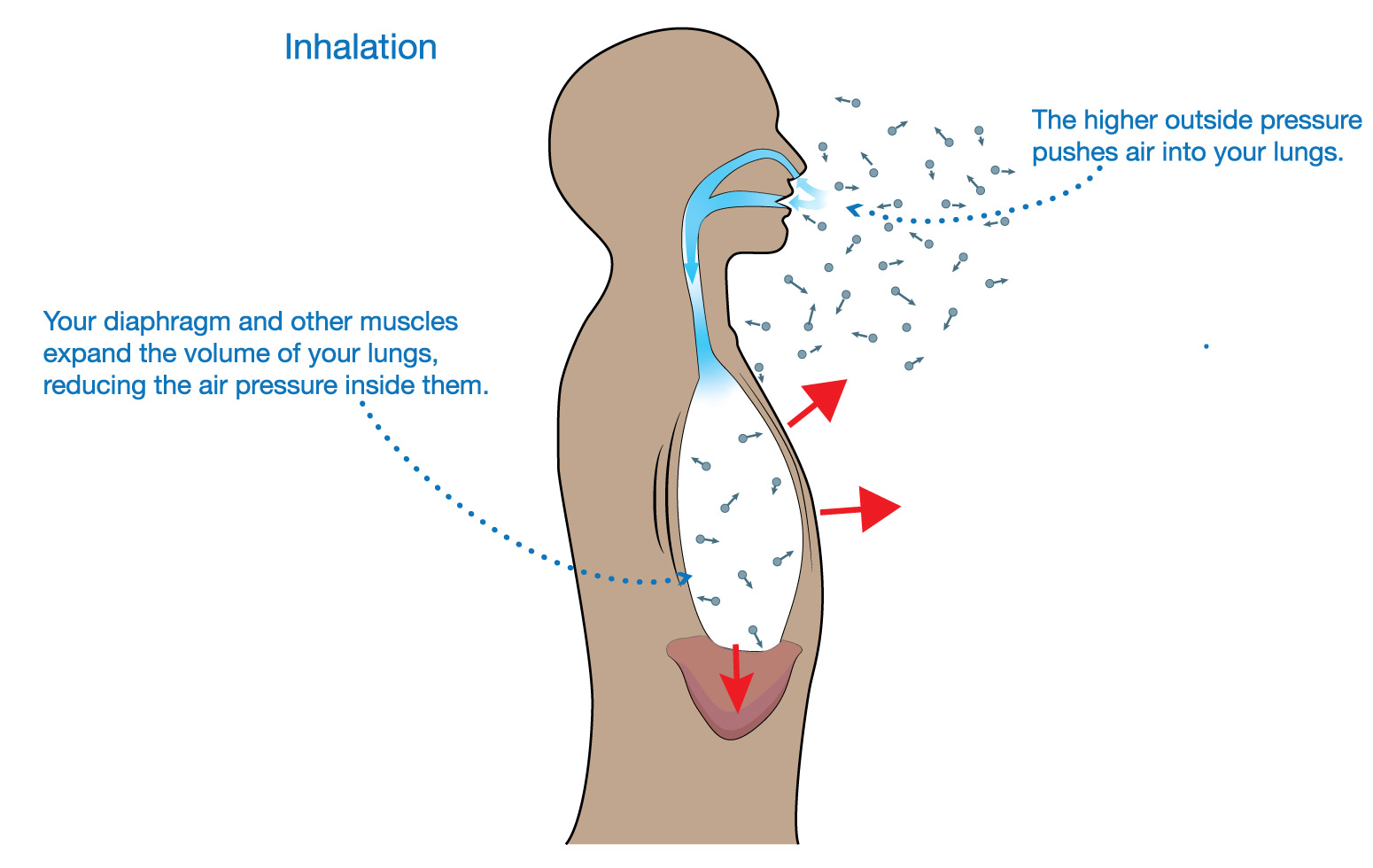So how does what we call “suction” actually work ?
Perhaps surprisingly, you can answer this question by thinking about how breathing works. When you inhale, you are using your diaphragm and other muscles to expand the volume of your lungs. Figure 1a shows how this causes air to flow into your lungs:
- Your lungs initially contain a certain amount of air, so in the instant you expand your lungs, this air becomes spread out in a larger volume, which reduces the air pressure.
- Because the air pressure in your lungs is now lower than the outside atmospheric pressure, the outside air pushes its way into your lungs.
Figure 1b shows the reverse occurring when you exhale:
- Your muscles contract your lungs, which increases the air pressure within them.
- Because the air pressure in your lungs is now higher than the outside atmospheric pressure, the air in your lungs is pushed outward.


In other words, the act of breathing in and out is really an act of changing the internal air pressure of your lungs, so that it either becomes greater than or less than the outside pressure. If you think about it, you may realize that this also explains why breathing is more difficult at high altitudes: Because the outside air pressure is lower at higher altitudes, your lungs must expand more than they do at lower altitudes to make their pressure low enough for air to flow in. This increased need for expansion means your muscles must work harder for you to breathe at higher altitudes.
This same idea of mismatched pressures explain all things that we usually call “suction.” Think again about the straw. As we’ve discussed, you cannot be “sucking” the water upward, because your mouth has no direct contact with the water. But are you “sucking” air in from the straw? No. All you are really doing is expanding your lung volume, so that the air in the top of the straw spreads out into your mouth and lungs. This reduces the air pressure in the top of the straw, so that the outside air pressure can push the water upward as you saw in Figure 6.1.1–6.
In a somewhat similar way, a “vacuum cleaner” uses a motor to push air out from the chamber in the cleaner, which lowers the pressure in the chamber so that the outside air pushed into it. This cleans up dust and debris, because this material is carried along with the inward flowing air (much like dust being blown by the wind).
Even “suction cups” work the same way. Think about pressing a suction cup onto a window. When you push down on it, you push its air outward, so that the pressure inside it is lower than the outside pressure. As a result, the outside air pressure is pushing much harder on the cup than its inside pressure is pushing out, and therefore it is held in place (“stuck” to the window) by that outside push.
To summarize, there’s really no such thing as “suction.” Instead, what we think of as suction is really just the push of air when the pressure is higher on one side of an object than the other.
